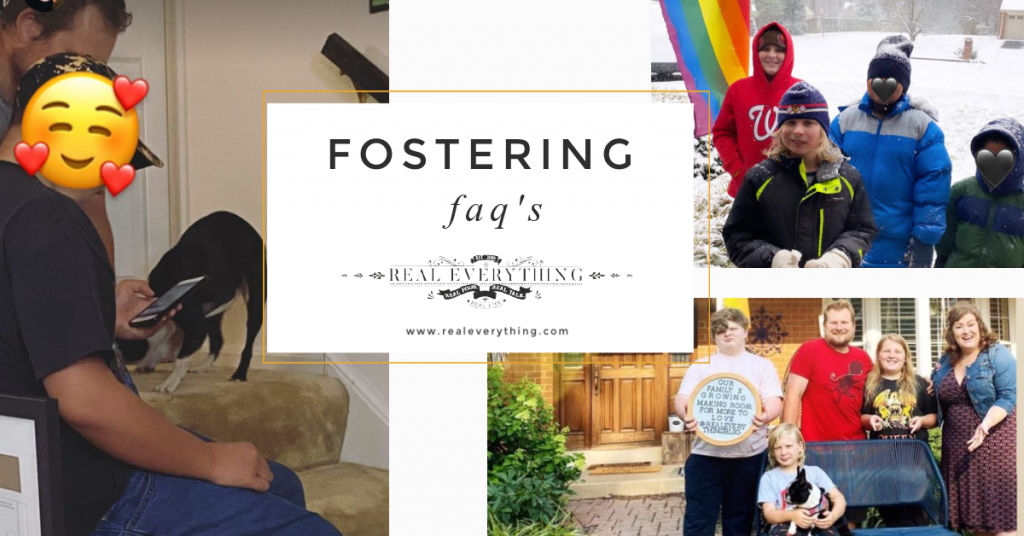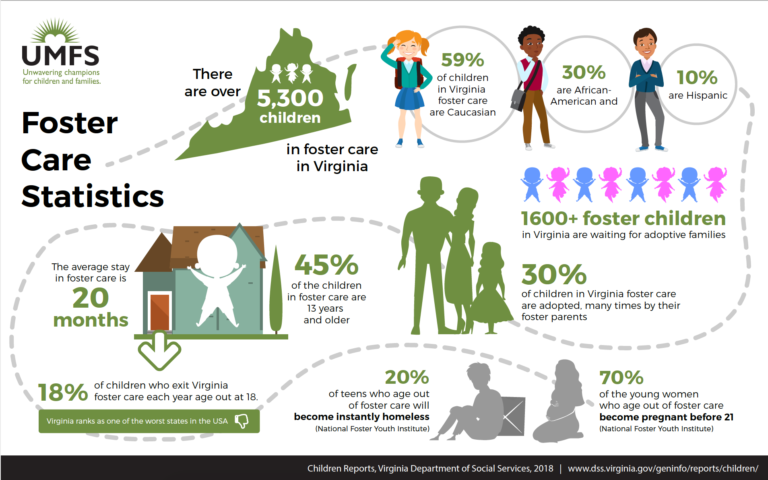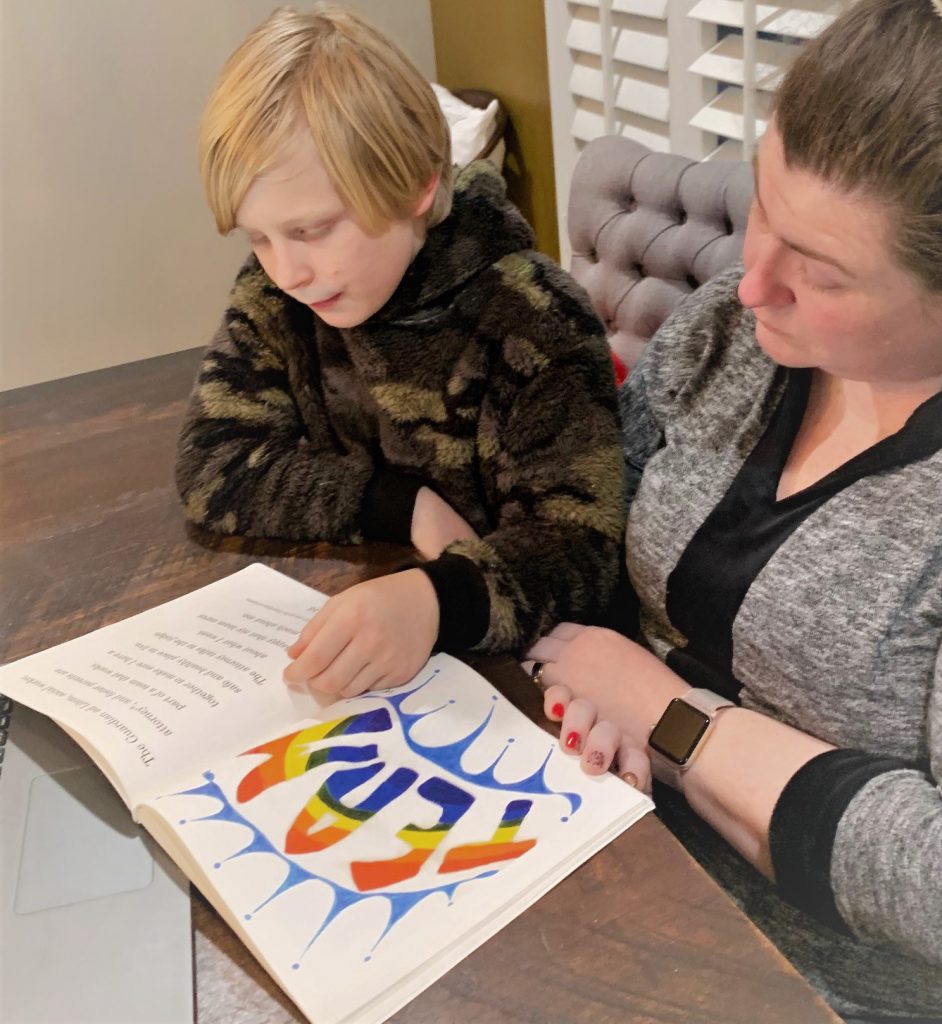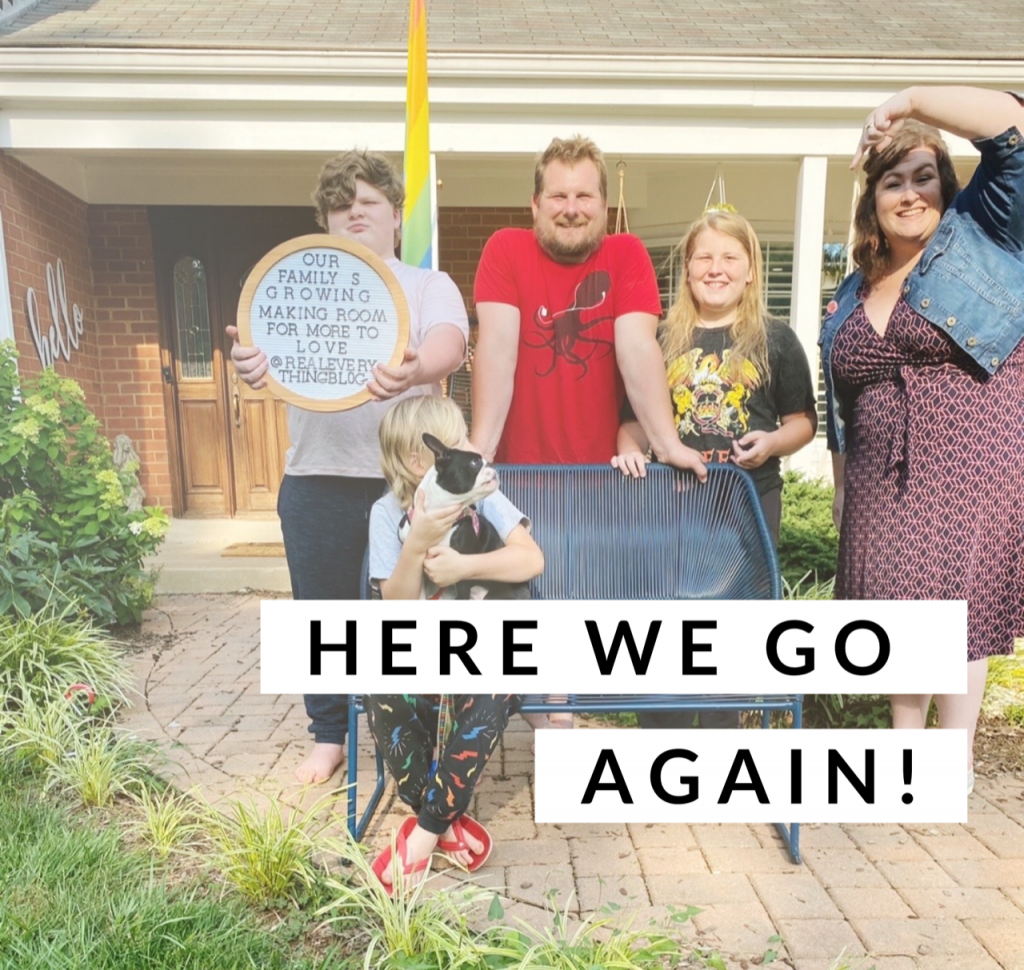
As many of you already know, we’ve taken the leap into fostering! In fact, this week we welcomed our 4th kiddo, our 2nd long(er)-term placement. While our family will not (and cannot) share details about the kiddos that stay with us, know they are such a gift to our own growth and happiness. I’ve loved being able to welcome them all and am grateful, for the growing pains, new experiences, lots of learning, and making memories to last a lifetime.
Here are answers to some of the most common questions we’ve received throughout this process.
Getting Started with Fostering
Q: What made you decide to become a foster parent?
A: This is probably the most ask question we get! The short answer is, it’s always something we’ve wanted to do, even before having biological kids. There are so many kids out there who need safe, loving, and stable homes, and long go we made plans to help out. We knew older kids need homes the most, so we waited until our own boys were old enough to begin.
After I left corporate America, we had the time, resources, and desire to show my boys how privileged we are and how important it is for us to give back and help others. But more importantly, how others can help us! For a more in-depth look into our decision, check out We’re Training to be Foster Parents.

Q: How did you know you were ready?
A: This is also something we talk more in-depth on the above linked post, but it just felt right. We went into this process specifically wanting to foster older kids, because that’s the age group that needs it the most. We decided to wait until our boys were similar to the group we were looking to foster. It would make the transition easier (both for us and our foster) because everything in the house is age-appropriate by default.
When I say it just felt right, know that you never fully feel prepared to be a parent. Ever. For any kid. Any age. Any circumstance! But becoming a foster resource family isn’t something you decide overnight. See below for the process, which by the time we went through we knew we wanted to continue.
Q: How did you get started fostering?
A: There are many ways you can become a foster family and there is plenty of room for you. We found an Agency (a non-profit organization) that acts as a liaison between the state (which, admittedly can be very frustrating at times) and foster families (you) that shared many of our same values. After going through training, I felt comfortable knowing we would have them as a built-in support system.
We also knew, with a bit of nerves and fear in the back of our minds, that if nothing else we could be a Respite family. Respite families are short-term caregivers for foster resource families who may need short-term care for their kiddo for a variety of reasons, like if someone needs to travel. It’s a great way to participate without going “all in” if you’re not sure fostering is for you. We have done both long-term placement that used respite and been a respite family for other long-term caregivers.
Being part of a community that supports the kiddos’ best interests is really incredible – everyone we’ve met has been wonderful!
Q: How did you and your family prepare?
A: Well, the 6 months it took to complete training and our home study really prepared us. But, before that – we watched a ton of movies and documentaries and read a few books (with our own biological kids). We also talked over the months leading up to placement about what to expect, how certain situations would be different, and how we might have to change rooms around.
We also talked about expectations from a realistic perspective, rather than a fantasy dream. There’s a lot of different scenarios that might arise, especially since we specifically chose to take in older kiddos who have experienced trauma. Like all children, you have one vision or expectation in your head… but, the child that ends up being the best fit for your family may be entirely different than you imagined.
We sat down with our boys and went over rules and expectations we came up with as a family. Then when a kiddo is placed with us, we go over those rules and expectations with them. We are big on family meetings; it’s how we communicate and is a great way for us to get together, talk, meal prep, and get on the same page. We made sure to talk about any big decisions with the kids and get their acceptance before making changes to their lives.
Q: What kind of training did you receive?
A: Our agency, UMFS, was very detailed and did a great job framing the expectations for us. And that really helped us frame it for our boys, who did not receive formal training like we did but were involved in the entire process.
We were told what specific things we would need to get or do before being approved to foster. Many agencies have resources of things you might need but not already have, like a playpen or car seat. A budget is provided for necessities, like clothing, and we are compensated for the food, shelter, and care of kiddos placed with us – both long-term and respite.
Requirements and training vary by state and agency, so you’ll want to do some research into what’s common for your area.
Q: What is Respite?
A: Our second fostering experience was a respite placement. This means exactly how it sounds. Providing a “break” for another foster family. In some cases, it’s simply about giving people time to have some space (like when kids may otherwise visit grandma), or in others it could be planned based on family need. When we had our two (younger) kiddos it was right before Christmas and it went so quickly! We had a lot of fun with a big snow, opening holiday themed stories to read before bed, and what we hope felt like being at an extended family member’s house. You know me, Cool Aunt Stacy!
Q: Any research/reading recommendations?
A: Agencies have a lot of really great resources and can answer a lot of your questions. We did a lot of online research, watched documentaries, and followed social media accounts of people who’d gone through the process we were about to. Google “how to foster in my area” or “foster parent information session in my area” and see what comes up!

Fostering Logistics
Q: What does “reunification” and “Bridging the Gap” mean?
A: In Virginia (where we live), the system aims to have a child in foster care no more than 18 months. This means the goal is either to “reunify” the child with their biological family, or in permanent placement (i.e. adoption). Bridging the gap is the concept of connecting with the child’s biological family (immediate or extended) or previous foster homes to build a non-adversarial relationship with them for the benefit of the child.
I wish more divorcing parents would take the training we had on how important being a unified front is for the benefit of the child! Even if parents’ rights are terminated, it’s still beneficial for them to maintain as healthy of a positive relationship as they can. I love the idea of people being able to keep in touch and both heal and grow as a result – rather than how popular culture paints fostering. It doesn’t have to be another traumatic experience.
Q: What ages are you approved to foster?
A: We have no age restriction, but that might vary depending on what state you’re looking to foster in. That means we can foster any age from newborn to beyond eighteen (helping kids adjust to life after “aging out” of the system).
We requested ages close to our boys’ from an integration standpoint, because of what we already have in the home, and what activities we do. However, we’re open to all ages and situations. Currently our children’s ages are 10, almost 13, 14, and 15.
Q: Are you the child’s legal guardian?
A: No. Their parents are still their legal guardians, with intervention from the state. They have an assigned Guardian ad Litem (GAL) who acts in their best interest, but things like drastic haircuts still need to be approved by their biological parents. Unless parental rights have been terminated, in which case, the state is considered their legal guardian. This means things like school, legal and medical decisions are handled by the state, and not us.
If a foster parent proceeds with adopting a child in their care (if the child’s parental rights are terminated), then it changes the guardian dynamic.
Q: Do the families have any say in where the child is placed?
A: Yes! Once we made it through the entire process, the state has essentially “approved” us to be the caretaker of any child in the system that needs placement. Our Agency or the state you work with will have done a homestudy to know more about you personally, your family dynamic, beliefs, values. They do their best to match you with children with whom you will be a good match. They want you to be successful in helping the child and bridging the gap, which means them finding a good fit is in everyone’s best interests. Because the state is their guardian, they control where the child is placed, not the family the child originally came from.
That said, in both of our long-term placements we met both virtually and in person before proceeding with the children moving in. In emergency placement scenarios this isn’t always possible, but it any point if either the child or foster resource family has any concerns they are able to express it. This way, the goal is for the child to not be bounced around too often.
Q: Are you compensated for fostering?
A: Yes, you receive compensation. The state assigns an amount based on the level of care needed for children. It is not enough to live off of (despite the stories you hear). You must prove you have sufficient income on your own, without significant debt or financial concerns, in order to qualify for fostering. The intention is to help you pay for whatever the child needs while in your care and the state makes every effort to ensure they’re putting children into safe, stable homes – not just people who want money.
Q: Can you work and still foster?
A: Yes! My Agency actually helps working parents find child care and ensures that there is a plan for pick-up, drop-off, etc. They even help when needed for appointments, court hearings, etc. if needed. This is another reason to find a non-profit to help you!
Fostering and adoption also qualifies you for FMLA leave. Not only does fostering create so much work to do getting to know someone new and transitioning them in, but also because there’s so much paperwork, appointments, and such that takes up a lot of time. Think about how a newborn has time acclimate to your rules, to learn your style, where things are. When you bring an older child in, it’s impossible to have the expectation of “normalcy” in the home without first taking the time to help them acclimate.
Daily Life
Q: How do you handle food and dietary restrictions?
A: We let the agency know from the very beginning that (due to health reasons), we are a gluten-free household. It’s very important that we remain gluten-free (risk of anaphylaxis). All the kiddos we’ve had haven’t minded, no one complained about food – in fact all of them liked what we’ve made! That said, when we eat out they are free to order what they’d like.
When someone first comes, we ask what their favorite foods are, what they usually eat, etc. And then it’s our job to do that math on how to accommodate that. We meal plan all together so the boys can “ok” everything. That way, everyone is happy with what we’re having throughout the week.
Q: Are you nervous your bio-children will experience their own trauma being exposed to someone else’s?
A: We talked a bit about this with the agency worker who did our home study, and she knows that’s a priority when placing a child. They don’t want kids to be any more traumatized – any kid! Going through an agency allows them to find a match for your needs.
When you go through your home study, you’re able to talk about the things that are “triggers” for your family. We, personally, received absolutely no judgment on anything. They don’t want you and your family to be pressured or not be upfront about what you need for a happy home.
Q: What’s been the hardest part of fostering for you personally?
A: As an empath, I have a really hard time knowing the trauma and pain they’ve endured. I’ve read dozens of files of potential matches and each one brings tears to my eyes. It’s heartbreaking. We can’t imagine what it feels like. It’s our goal to give these kids a chance to experience joy, love, and stability. But we also have to have patience and understanding for how hard it will be for them to trust. It might even be difficult to assure them they won’t be abandoned or hurt by us. Seeing and living with that, as a reminder of what they’ve been through, is definitely the hardest.
There’s almost always a honeymoon period, and a lot of kids are coming from not great situations. Not to mention, joining “the system” and then a family that are strangers is a huge transition. There are rules, family history, and jokes you won’t understand, based on experiences you simply haven’t had.
We make sure to start with the basics, what we do to respect each other, and go from there. Everything has a learning curve. It’s important to have patience and ask for help when you need it.
Q: Does the foster child contribute to household chores?
A: Yes! We rearranged our chores to allow our foster to participate and earn an allowance. In Virginia (and our agency), it’s a requirement for us to help them learn how to earn and manage money by providing an allowance. Having them contribute to our household allows them to learn and earn right alongside our boys.

The Departure
Q: Do you have a timeframe for how long the child will be with you or is it an abrupt exit?
A: It really depends on the circumstance surrounding the child. Sometimes they anticipate to go back to their parents and you’re working towards that all along. Other times they’re permanently in the system (termination of parental rights). All these things you’ll generally know ahead of time.
Q: How does your family cope when a foster leaves?
A: It’s important for us to reconnect after our foster leaves us. We spend time together as a family, talk things through, and process our feelings. Attachment is part of the process, so we do our best to process it together. With each kiddo we’ve had it wasn’t ever really goodbye. We are in touch with our first long-term placement (the boys play video games with him online and he calls on holidays) and our respite kiddos will visit again soon!
Q: Are you worried your boys will get too attached?
A: Not at all! In fact, we’re hoping for it. Even when a foster leaves our house, they never fully leave our lives. It’s part of the process. We want to grow in empathy and relationships and make connections that could last a lifetime.
Q: Are you open to adopting or just fostering?
A: We are open to adopting. Most foster programs don’t easily transition to adopting, but ours does. Our goal, however, is to help as many kids as possible and hopefully aid families “bridging the gap” so that the child can go home to their parents.
Foster and adoption programs vary by state, so if you’re looking to have the ability to adopt, you’ll want to do your research.
Final Thoughts
Fostering is such a great way to give back and help children who really need a source of stability. If you have a question that wasn’t covered here, please leave it in the comments. We will do our best to answer it!
Want more info on our Real Life? Healthy recipes, parenting tips, and general lifestyle stuff goes out in our Real Everything newsletter, join here.
Never want to miss a post, sale, or deal? Join my Healthy Inside & Out e-mail list for more info on non-toxic living and safer skincare!




